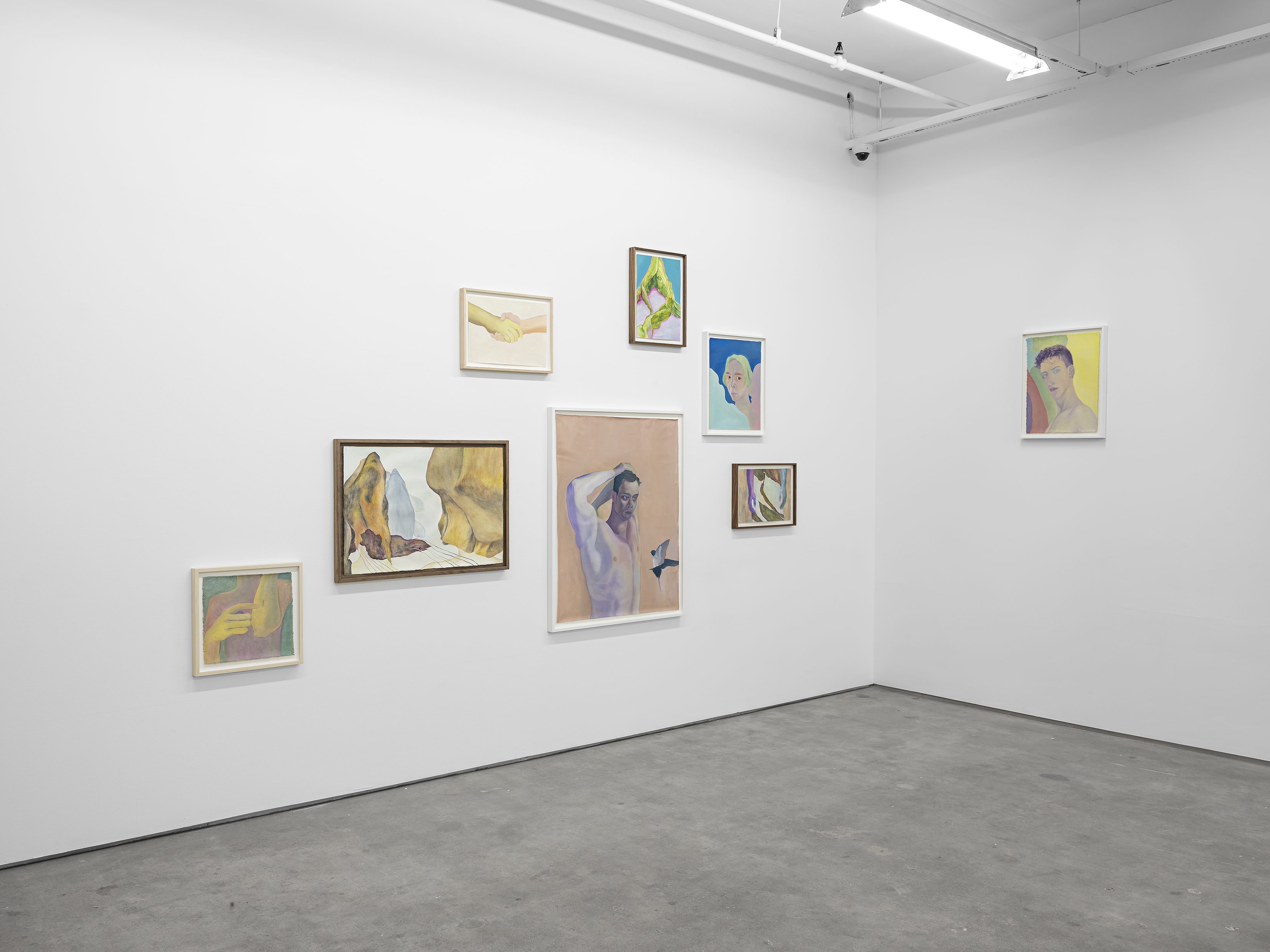Portholes
Standard, Oslo10th Nov 2023 - 13th Jan 2024
Please wait for me. A most tender request turned brutally somber when carved for ostensible eternity into the gravestone of a loved one. Derived from our understanding of Greek and Roman reliefs dated before the common era, this appeal and the notion of wishing a stall in time (and therefore death) is conveyed through a simple hand gesture- the index finger extended outwards, the remaining fingers clenched in. While the intricacies of iconography in classical antiquity is not easily understood in today's vernacular, gestures and meanings behind them are as common as ever. These signifiers are imbued with connotations open to interpretation and its partner, misunderstanding - depending on culture, context and time.
In Jinbin Chen's solo exhibition "Portholes", we see three distinct tableaus- landscape, portraiture, and hand gestures. Scenes broadened by two shape-shifting works play the pivotal role of fusing two of the aforementioned subjects together. A subtle hint suggests that all roles are mutable and not everything is what first meets the eye. The landscape paintings and drawings set the tone for a staged backdrop with their psychedelic colors and expanding webs taking root. The mix of oils and watercolors bring an intensity and otherworldliness to the stage. Imaginary places adjacent to forest floors, desert rock formations or underwater channels walk the border of abstraction and betray little clues to scale. Even less information can be deciphered through Chen's titling choices, such as "Place 1", "Place 2", "Place 3". With this platform laid, the emerging story could venture towards science fiction and fantasy, as with previous series of Chen's, but here we encounter portraiture of a somewhat classical nature. It is here that a meeting place for encounters and desire gains both potential and curiosity.
Two lone busts, "Stay 1" and "Stay 2" leer back at the viewer in a manner familiar to a Renaissance self-portrait. An artist looking over their shoulder and back at a mirror in order to replicate their own appearance. A technical necessity that creates an awareness of the maker and the viewer with a direct gaze. For Chen, this means of representation stems from an isolated picture-in-picture cutout he encountered as an illustration accompanying a text of an Old Masters' exhibition staged in China. The detail represented was clearly removed from the larger, original image, however without any clarification stating so - Chen considers how this truncated context mirrors our fragmentary consumption of images today.
In similar vein, here we have two characters, but we are left to fill in the larger picture with supplemental plot from the landscapes and gestures, much like how we now ask digital cameras and AI programs to fill in the blanks. Chen's "Figure Under a Tree" slightly bridges the gap between genres by situating a gender indeterminate figure in a contemplative supine trance. Either we are about to expose a new dimension of gravity, or our melancholy friend who seemingly holds the weight of the world on their shoulders is just having a generic bad day. The purple and green feet seem to be parting thoughts or a nod to mystical transcendence. This figure unlocks a particular connection to Chinese painting history through a typical motif of a human under a tree, but the reasoning remains unclear. From a Christian perspective we can infer from the recumbent positioning reference to Christ, the stigmata, and laying down life for the believers. These themes are mimicked in the work, "Behold the Wound" where attention is drawn to a surface cut.
While the figures seem ripe for touch, it is only in the isolated hand gestures where we see physical contact. "Dexiosis", or joining together of the right hands, is a simple handshake. A move from the dawn of humankind, albeit one that comes with variety of interpretation. The transfer of power. Consensual agreement. Or bidding farewell.
-Mary Grace Wright





Image courtesy of Standard(Oslo)